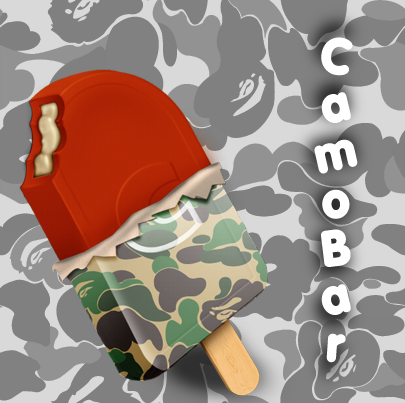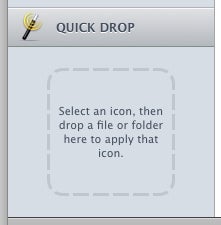
This is a result of how alias icons are created by OS X. Note that if you previously created an alias to an item, and then you give the item a new icon-using any of the above procedures-the alias will keep its original icon. (To remove a user-level folder icon, you must use the Finder’s Get Info command on the item, select the icon, and then choose Cut from the Finder’s File menu.) Then you drop the “target” file or folder into the QuickDrop area the new icon is applied immediately. First, in the View pane you select an icon from your library the Quick Drop area at the bottom-left of the CandyBar window will display a large preview of the icon. One thing I’d like to see here is the name of each icon so I can determine which system icon it will replace often it’s obvious, but sometimes it’s not.Īt the other end of the spectrum, if you’ve got a particular user-level folder or file you want to customize, rather than a system-level or application icon, CandyBar makes doing so easy. You just select the desired collection of icons on the left and then click on the Use These Icons button in the View pane. You’ll need to log out and then log back in for system-level icon changes to take effect changes to application or volume icons require only a Finder relaunch.ĬandyBar makes it even easier to apply an entire collection at once-in other words, to change all system icons simultaneously. If you’re changing system-level files, you’ll be asked for an admin-lever username and password. (If you change your mind, just drag the replacement icon off of the original.) Once you’ve made the desired changes, click on the Apply Icons button that appears at the top of the window.

Finally, the Trash item, like iPhoto’s Trash, displays any icons you’ve deleted.Ĭhanging icons Changing a single icon-for example, the Finder’s generic icon for a document-is simple: After choosing the icon group-system, applications, or volumes-in the Change tab, you just drag the desired replacement icon from the View pane (that’s the one on the bottom) onto the icon you want it to replace in the Change pane (the one on top) the new icon will take the place of the original. You can also choose to view icons as a list list view displays the icon sizes available for each icon and, by clicking on the “i” (info) button, shows you detailed information about the icon. Alternatively, as in iPhoto, you can drag the zoom slider at the bottom of the window to resize the icon previews. One of my favorite icon-viewing features is Quick Look support select an icon and press the space bar to see all sizes of that icon. If a collection includes Dock elements, it displays a DOCK label next to its name and includes a preview of Dock elements along with its icons. You can create your own collections, or you can import collections you’ve downloaded from the Internet. Click on a specific collection-similar to an iPhoto album a collection called Float is included-to view just the icons in that collection. Click on My Icons to view (in the View pane) all icons you’ve collected in CandyBar an attractive starter set is included. The Organize Tab, in the middle, is a bit like iPhoto for icons.

Clicking on one of these item types displays, in the Change pane to the right, the items of that type you can modify. The Change Tab, at the top, lets you choose what you want to modify: system icons, application icons (any program in /Applications), the Dock, or the icons of mounted volumes.
Candy bar icons for mac mac os#
The main window is divided into three panes: the top-right pane (which the developer calls the Change pane) shows Mac OS X’s current icon or Dock appearances the lower-right pane (called the View pane) displays possible icons or Dock modifications you can apply the left-hand side hosts CandyBar’s three “Tabs”-areas where you initiate or perform actions. But once I grasped the program’s organizational approach, I found CandyBar to be fairly easy to use. When you first launch CandyBar, you may find its interface to be a bit confusing that was my initial reaction, at least. It even lets you customize Leopard’s Dock.

Candy bar icons for mac full#
We reviewed CandyBar 1.5 way back in 2003, but the latest version is a much different product: in addition to full Leopard compatibility-including support for Leopard’s 512- by 512-pixel icons-and a completely new interface, CandyBar 3 also incorporates IconFactory’s previously-separate Pixadex icon-organization software. That’s where CandyBar 3.1.2 ( $29 upgrade, $24 or $19), a joint effort between Panic and IconFactory, comes in. The problem is that you can’t change these images without some mucking about-a process that’s more trouble than it’s worth to many users (not to mention a bit risky).


 0 kommentar(er)
0 kommentar(er)
